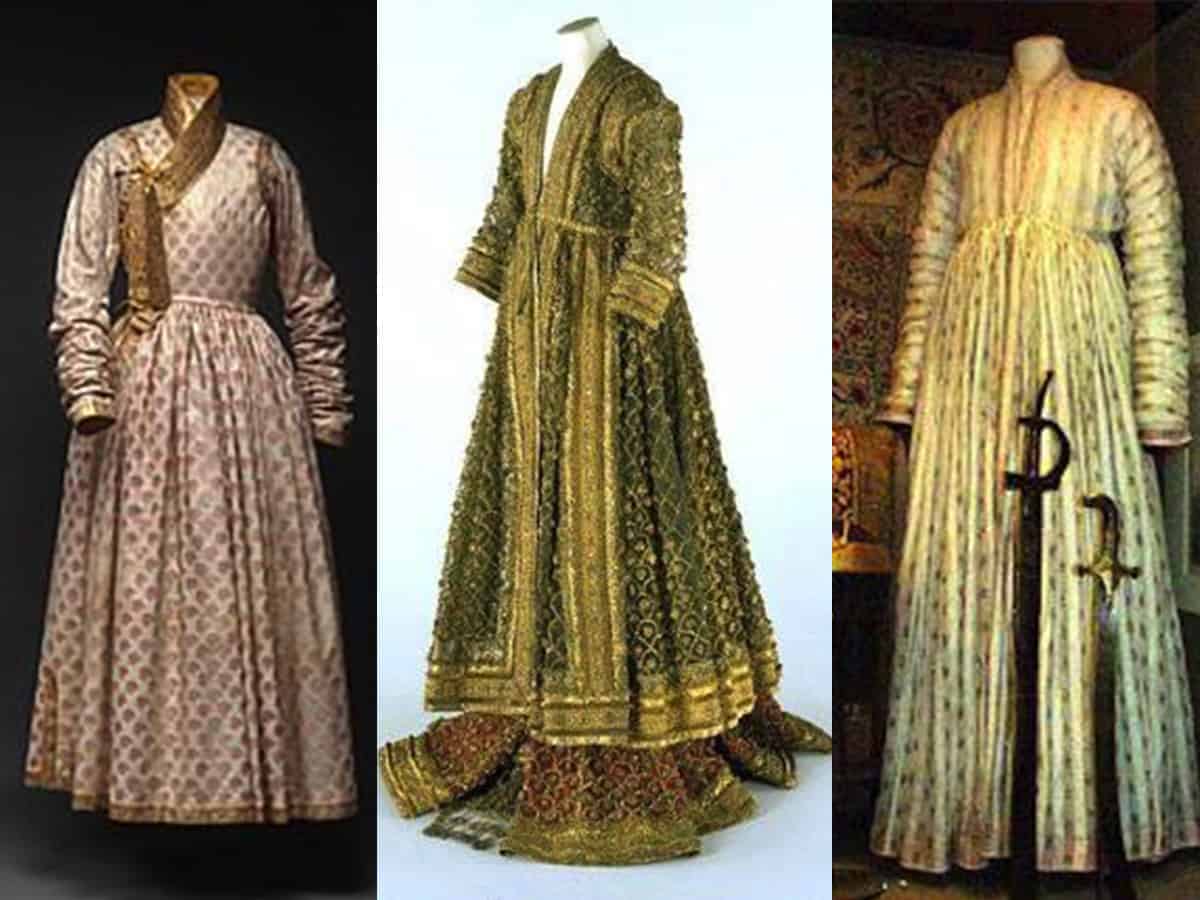Disir
Platinum Member
- Sep 30, 2011
- 28,003
- 9,607
- 910
Hence, the khilat, a garment which was worn on the outermost side and was most visible, embodied a token of closeness, gratitude, respect, appreciation or recollection of some significant event. Symbolically speaking, the process of giving and taking a robe of honour transferred a condition (such as authority) on the receiver. But this was not all; gifts of apparel even drew on the function of maintaining enmity as one could never be sure of the real intention of receiving a khilat.
Historian Stewart Gordon who has worked extensively on the khilat tradition of honorific robing prevalent in South Asia in the pre-colonial and colonial periods, says the Arabic term khilat first appears in the eighth and ninth centuries, when the bestowal of garments became both common and institutionalised. Marco Polo, the Venetian merchant and explorer and Ibn Batuta, the early fourteenth-century Berber Moroccan scholar and explorer give various accounts of the world of robes of honour. Presentation of robes were common among Hindus and Muslims in India, in Muslim courts of northern India and in the Hindu courts of Rajasthan at least two centuries before the Mughal Empire was founded in 1526. The Mughals from the time of Babur popularized this existing tradition. By the reign of Humayun, who came to the throne in 1555, the number of robes given out increased dramatically. But references to poisoned khilats come up only from the time of Akbar (1556-1606) and prevail till the end of Aurangzeb’s rule in 1707.
Other than adorning the body and symbolically being metaphors of power, as Bernard Cohn, the American anthropologist and scholar of British colonialism in India, points out that khilats were a medium through which substances could be transferred.

 www.siasat.com
www.siasat.com
That's kind of cool. I stumbled on this. I don't know anything really about the khilat.
Historian Stewart Gordon who has worked extensively on the khilat tradition of honorific robing prevalent in South Asia in the pre-colonial and colonial periods, says the Arabic term khilat first appears in the eighth and ninth centuries, when the bestowal of garments became both common and institutionalised. Marco Polo, the Venetian merchant and explorer and Ibn Batuta, the early fourteenth-century Berber Moroccan scholar and explorer give various accounts of the world of robes of honour. Presentation of robes were common among Hindus and Muslims in India, in Muslim courts of northern India and in the Hindu courts of Rajasthan at least two centuries before the Mughal Empire was founded in 1526. The Mughals from the time of Babur popularized this existing tradition. By the reign of Humayun, who came to the throne in 1555, the number of robes given out increased dramatically. But references to poisoned khilats come up only from the time of Akbar (1556-1606) and prevail till the end of Aurangzeb’s rule in 1707.
Other than adorning the body and symbolically being metaphors of power, as Bernard Cohn, the American anthropologist and scholar of British colonialism in India, points out that khilats were a medium through which substances could be transferred.

Khilat—A robe of honour or weapon to kill
I am not part of many WhatsApp groups. But there is one group by the name of Heritage Buffs that interests me. The discussion in the group is generated on matters related to history…
 www.siasat.com
www.siasat.com
That's kind of cool. I stumbled on this. I don't know anything really about the khilat.
